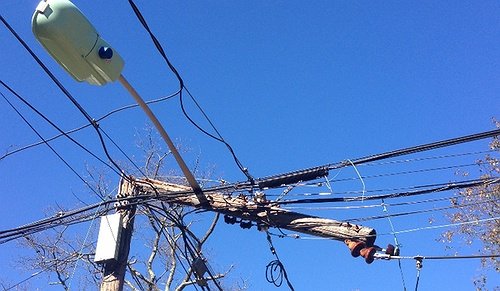Long Island, NY - October 29, 2014 - Where were you when Superstorm Sandy hit two years ago today? Thousands of National Grid crews in New York, Massachusetts, and Rhode Island were prepared and ready to respond to service interruptions and restore service safely and quickly to customers.
“It is hard to believe it has been two years since Superstorm Sandy struck the northeast,” said Tom King, president, National Grid U.S. “I think we can all agree that this storm was unprecedented, one that affected many of us in ways that we’re still feeling and talking about today.”
It’s with good reason. During Sandy, 8.5 million businesses and residences lost their electricity across the eastern seaboard. In New York, more than 140,000 National Grid natural gas customers were impacted, leading to the largest restoration effort in the history of the natural gas industry.
“We know what kind of damage severe storms can do to our energy infrastructure,” King said. “We know that extreme weather is here to stay and the degree to which Sandy has propelled a national conversation around the resiliency of our 21st century energy systems.”
A study by the Munich Re Group found that between 1980 and 2011, the frequency of weather-related, energy system-threatening events rose by nearly 500 percent in North America, a faster increase than anywhere else in the world.
Across National Grid’s U.S. service area the company has responded quickly to storm events since Sandy, and has been preparing for the possibility of increased storm activity for several years by investing billions of dollars into its electricity and natural gas system to improve reliability and resiliency.
The company plans to invest nearly $10 billion in infrastructure in the next five years. These investments will help upgrade the company’s network and allow the company to continue to provide safe, reliable power and natural gas to its more than 6 million customers.
“Extreme weather is on the rise and we have committed to a long-term investment strategy that will improve the reliability and resilience of our system,” King said.
National Grid has also introduced its Connect21 initiative to modernize networks and introduce new technologies. This framework links customer needs and policy goals with technology and market solutions, and the roadmap the company is following to drive it toward the utility model of the future.
While utilities have always been accountable to regulators, this new approach will require a new regulatory model that broadens the mandate of utilities to be more accountable for policy outcomes, such as promoting cleaner energy, advancing innovative technologies, and driving economic growth.
National Grid’s Connect21 strategy aligns with New York’s Reforming the Energy Vision (REV) initiative. Both initiatives are designed to help increase use of alternative energy resources and promote expanded energy efficiency, renewable energy, distributed generation, and energy storage programs.
In Massachusetts, the Department of Public Utilities announced its Grid Modernization program, which envisions a modern electric system that will be cleaner, more efficient and reliable, and will empower customers to manage and reduce their energy costs.
Working with regulators in Rhode Island, National Grid continues to realize benefits of its energy efficiency programs, saving money for customers, creating jobs and helping businesses grow.
As the company continues on work to define what the future utility will look like, safety and reliability remains at the core of all National Grid efforts. This includes emergency preparedness. As we transition into colder weather, the need to stay prepared for emergencies remains important. National Grid encourages customers to take the extra steps to prepare for emergencies during the winter months. Taking action now, before an emergency strikes, will help customers efficiently and safely manage crises that can upset their daily routines.
“Safety is our top priority for customers year round. We’re reminding our customers of the importance to plan for emergencies in advance so they know what’s needed to take care of themselves and their families, and to help others in their communities,” King said.
Below are links National Grid customers can use to help prepare for emergencies.
www.ready.gov
www.redcross.org
www.FEMA.gov
http://arcbrcr.org
To learn about other ways to stay connected during storms and other outages click here.
Photo by Thomas Gernon via The Hurricane Sandy Photo Gallery










